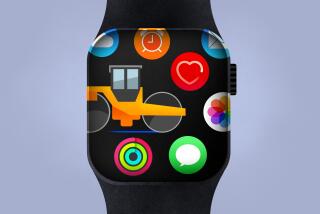An Operating System Waiting to Be
- Share via
A year ago, the Mac market was abuzz about Be. (Forgive the pun; I thought I’d get it out of the way.)
The Be operating system was nearly chosen as successor to the Mac operating system. After considerable haggling, talks between the companies collapsed, Apple chose Steve Jobs’ Next Inc., and the rest is, well, not quite history, since Apple has yet to ship its NextStep-based Rhapsody OS.
Still, in honor of the anniversary of what wasn’t meant to Be (last one, I promise), I visited Jean-Louis Gassee, Be’s colorful French founder and chief executive, in his Silicon Valley office. Gassee had spent much of the ‘80s as Apple’s top technologist.
After being fired by Apple CEO John Sculley in 1990, Gassee started Be with a few Apple refugees--including Erich Ringewald, inventor of Multifinder, the original scheme that lets you switch between different applications and one of the Mac’s seminal contributions.
Be pulled together from scratch an OS that looks a lot like the Mac OS, but acts a lot like the more powerful, stable Windows NT. Be’s product is arguably the fastest and best multimedia platform on the planet.
What can you do with the Be OS? How about rendering a complex, three-dimensional picture while viewing multiple, simultaneous QuickTime videos and browsing the Web? When you click from task to task, all the windows on your screen keep updating--without crashing the system.
Don’t try this at home, kids--unless you happen to be a multimedia developer or designer waiting impatiently for Rhapsody to handle similar feats next year. (For the Macs that will run the Be OS, and for the software itself, check out https://www.be.com. Gassee plans a version for Intel-based machines early next year.)
How did Gassee do it with a tiny company (still only 50 employees) that’s burned a mere $24 million since its inception? (In contrast, Apple spent hundreds of millions trying to get the aborted Copland OS to do Be-like tricks, then paid $400 million for Next.)
Gassee is saving the answer for his book. But in this classic Gasseeism, he gave me a clue: “My article of faith is, don’t tell programmers what to do. If they ask you what to do, shoot them.”
Someone once suggested that instead of buying Next, Apple should have spent the $400 million to fund dozens of small companies to develop exclusively on the Mac. When you look at Be, the logic of the idea becomes apparent. It’s often the little companies that come up with the big ideas.
Unfortunately, big ideas often flop as products. And the Be operating system has a huge problem: applications software, as in not much of it.
It runs hundreds of shareware programs and a handful of commercial applications, including e-mail, word processing, a fast, easy browser and a few strong multimedia programs. But no QuarkXPress, no Photoshop, nothing from a single major vendor. No killer app to do what PageMaker did for the Mac.
So Be is thinking small, waiting for software to emerge that can make the Be OS the preeminent multimedia tool. The company hopes to sell OS subscriptions at about $50 to $100 per user per year.
Just how many will take the bait in 1998, Be’s make-or-break year? “I have a number, but I won’t say it,” Gassee says, “because I like to come around at night and paint the target around the arrow, wherever it lands.” Very wise, considering his competition: the most powerful company on Earth (plus Apple).
Be’s approach to competition is summed up aptly by two framed images that hang in its modest outer offices. One graphs the progress of Napoleon’s ostensibly invincible 442,000-man invasion into the heart of Russia in 1812, and after the force’s decimation in the Russian winter, the return of only 10,000 survivors. Nearby is a banner with the Be logo and this slogan: “Resistance Is Not Futile.”
A few Be fanatics have urged Gassee to appropriate Apple’s “Think Different” campaign--”Be Different.” But he’s learned too much from Apple’s mistakes--some of which he can even take credit for--to do that.
“This is not about being different,” he says, “it’s about being relevant.” Apple would do well to heed those words.
Be is still far from relevant. But given its strong technology, and the distance Rhapsody still has to travel, I can’t help but lament Be’s ill-fated courtship with Apple and imagine what might have been.
*
Charles Piller can be reached via e-mail at cpiller@aol.com

![Monrovia, CA - November 06: Original Apple-1 "NTI" motherboard and an Apple Cassette Adapter (ACI) in an original ByteShop Apple-1 koa wood case with Datanetics Keyboard Rev D [keyboard dated: Sept 21 1976]. Morgana Blackwelder with Hand-built Apple-1 displayed for auction at John Moran Auctioneers on Saturday, Nov. 6, 2021 in Monrovia, CA. (Irfan Khan / Los Angeles Times)](https://ca-times.brightspotcdn.com/dims4/default/ab3eeec/2147483647/strip/true/crop/2393x1600+4+0/resize/320x214!/quality/75/?url=https%3A%2F%2Fcalifornia-times-brightspot.s3.amazonaws.com%2Fee%2F8c%2Fa8b37d02425890021cfcd2b29c00%2Fla-photos-1staff-868241-me-1106-apple-first-unit-005.IK.JPG)




